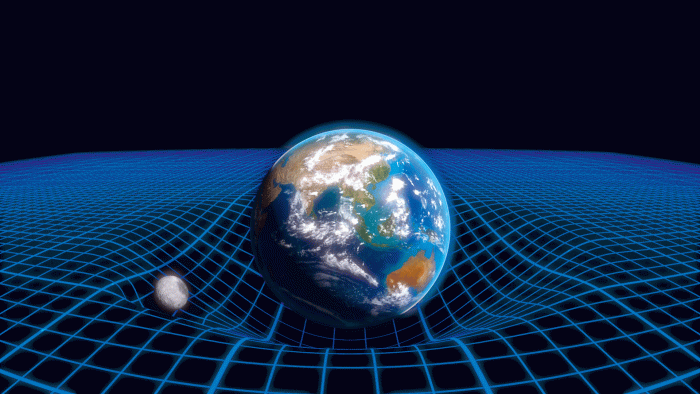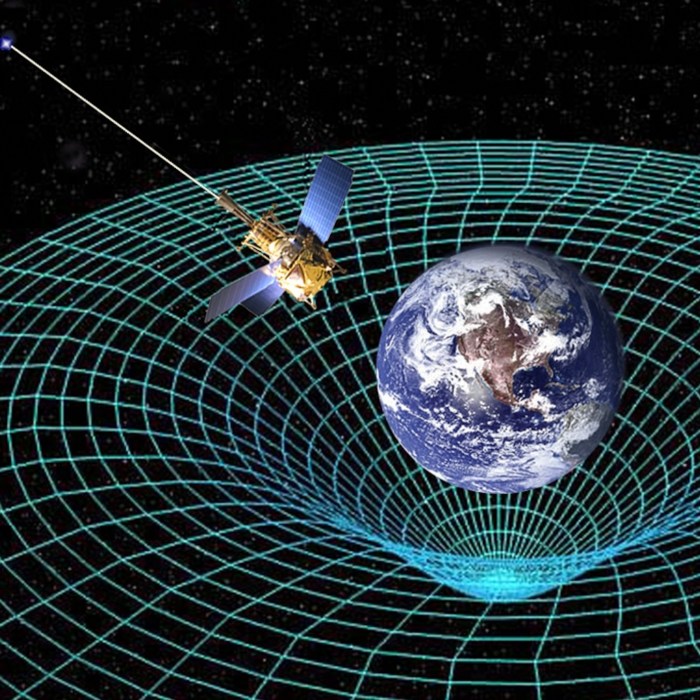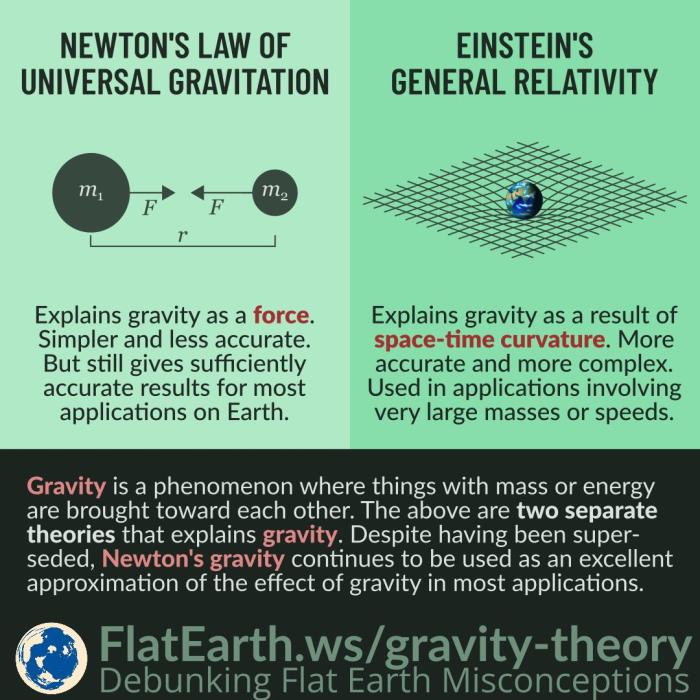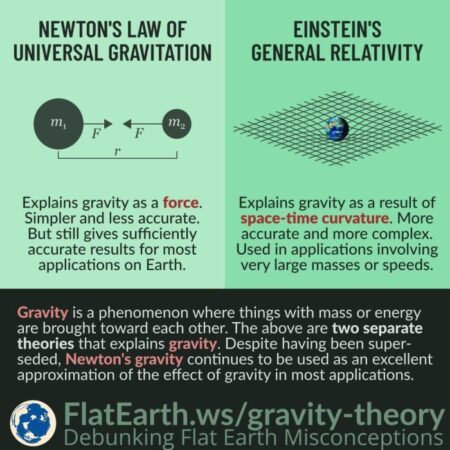
Is gravity a theory or law – Is gravity a theory or a law? This question delves into the heart of scientific understanding and how we describe the universe. While often used interchangeably in everyday language, these terms hold distinct meanings in the scientific realm. A scientific law describes a fundamental relationship in nature, often expressed mathematically, while a scientific theory is a well-substantiated explanation for a phenomenon, supported by a vast body of evidence. In the case of gravity, we’ve journeyed from ancient philosophers pondering falling objects to Newton’s groundbreaking law of universal gravitation, and ultimately to Einstein’s revolutionary theory of general relativity. This exploration will unravel the intricacies of gravity’s scientific classification, unveiling the fascinating journey of discovery that has shaped our understanding of the cosmos.
Throughout history, scientists have observed and studied gravity, leading to the development of theories and laws that explain its workings. From the ancient Greeks to Isaac Newton, scientists have strived to understand why objects fall to the ground and how celestial bodies move in the vast expanse of space. Newton’s law of universal gravitation, a cornerstone of classical physics, successfully explained a wide range of phenomena, from the orbits of planets to the tides on Earth. However, with the advent of Einstein’s theory of general relativity, our understanding of gravity underwent a profound transformation. This theory, based on the curvature of spacetime, provided a more comprehensive explanation of gravity’s workings, particularly at extreme scales, such as near massive objects or at high speeds.
Understanding Scientific Terminology: Is Gravity A Theory Or Law

In the realm of science, understanding the precise meaning of terms is crucial. Words like “theory” and “law” are often used interchangeably in everyday language, but in science, they carry distinct meanings.
The Distinction Between Scientific Theories and Laws
Scientific theories and laws represent different levels of understanding in science. A scientific law describes a consistent pattern observed in nature, often expressed as a mathematical equation. It describes what happens but doesn’t explain why. A scientific theory, on the other hand, provides a comprehensive explanation for a phenomenon based on extensive evidence and rigorous testing. It aims to explain why something happens.
Examples of Scientific Theories and Laws
- Law of Universal Gravitation: This law, formulated by Isaac Newton, describes the force of attraction between any two objects with mass. It states that the force of gravity is directly proportional to the product of their masses and inversely proportional to the square of the distance between their centers. It describes the phenomenon of gravity but doesn’t explain why it exists.
- Theory of General Relativity: Einstein’s theory of general relativity provides a more comprehensive explanation for gravity, proposing that gravity is not a force but a curvature of spacetime caused by the presence of mass and energy. It explains the phenomenon of gravity and its relationship to the structure of the universe.
- Law of Conservation of Energy: This law states that energy cannot be created or destroyed, only transformed from one form to another. It describes the consistent pattern observed in energy transformations.
- Theory of Evolution by Natural Selection: This theory, proposed by Charles Darwin, explains how life on Earth has evolved over millions of years through the process of natural selection. It explains the diversity of life and the mechanisms of adaptation.
Everyday Language vs. Scientific Language
In everyday language, “theory” often implies a guess or an unproven idea. However, in science, a theory is a well-substantiated explanation supported by a vast body of evidence. Similarly, “law” in everyday language can be used to describe rules or regulations. In science, a law describes a consistent pattern observed in nature, often expressed mathematically.
Einstein’s Theory of General Relativity

Einstein’s theory of general relativity, published in 1915, revolutionized our understanding of gravity, shifting it from a force acting between objects to a manifestation of the curvature of spacetime. It provided a more comprehensive and accurate description of gravity, particularly in extreme conditions like those found near massive objects or at high speeds.
Comparing Newton’s Law of Universal Gravitation and Einstein’s Theory of General Relativity
Newton’s law of universal gravitation, formulated in the 17th century, described gravity as a force acting between any two objects with mass. This force is proportional to the product of their masses and inversely proportional to the square of the distance between their centers. This law accurately predicted the motion of planets and other celestial objects in our solar system. However, it failed to explain certain phenomena observed in extreme conditions, such as the bending of light around massive objects.
Einstein’s theory of general relativity offered a more profound explanation of gravity, proposing that gravity is not a force but a consequence of the curvature of spacetime. This curvature is caused by the presence of mass and energy, which warp the fabric of spacetime. The more massive an object, the greater the curvature it creates, and the stronger the gravitational pull it exerts.
- Newton’s Law: Gravity is a force acting between objects with mass.
- Einstein’s Theory: Gravity is a manifestation of the curvature of spacetime caused by mass and energy.
Key Differences in Describing Gravity
The key differences between Newton’s law and Einstein’s theory lie in their descriptions of the nature of gravity:
- Newton’s Law: Gravity is a force that acts instantaneously across distances.
- Einstein’s Theory: Gravity is a consequence of the curvature of spacetime, which propagates at the speed of light.
Einstein’s theory predicts that gravity affects not only massive objects but also light, causing it to bend around massive objects. This phenomenon, known as gravitational lensing, has been observed and confirmed by numerous experiments.
- Newton’s Law: Gravity is a constant force, independent of the object’s speed.
- Einstein’s Theory: Gravity is influenced by the object’s speed, with stronger gravitational effects at higher speeds.
Einstein’s theory also predicted the existence of gravitational waves, ripples in the fabric of spacetime caused by accelerating massive objects. These waves were finally detected in 2015, providing further evidence for the validity of general relativity.
Evidence Supporting Gravity as a Theory

Einstein’s theory of general relativity, which describes gravity as a consequence of the curvature of spacetime caused by mass and energy, has been supported by numerous observations and experiments. These observations provide strong evidence that gravity is not just a force but a fundamental property of the universe.
Gravitational Lensing, Is gravity a theory or law
Gravitational lensing is a phenomenon where the light from a distant object is bent around a massive object, such as a galaxy or a black hole, due to the curvature of spacetime caused by the massive object’s gravity. This bending of light causes the distant object to appear distorted, magnified, or even multiple images of the same object.
The bending of light around a massive object is predicted by Einstein’s theory of general relativity.
- Observation: Astronomers have observed gravitational lensing in many instances, including the bending of light from distant quasars around galaxies and clusters of galaxies. The observed distortions and multiple images match the predictions made by general relativity.
- Theory Supported: Einstein’s theory of general relativity.
- Implications: This observation provides strong evidence for the curvature of spacetime and the bending of light by gravity, as predicted by general relativity. It also allows astronomers to study distant objects that would otherwise be too faint to observe.
Visual Representation of Gravitational Lensing
Imagine a massive object, like a galaxy, in the center of a large sheet of fabric. The mass of the galaxy causes the fabric to curve around it. Now, imagine a beam of light traveling from a distant object, like a star, towards Earth. As the light beam passes near the galaxy, it follows the curvature of the fabric, bending around the galaxy. This bending of light causes the distant star to appear distorted or even multiple images of the same star.
Precession of Mercury’s Orbit
Mercury, the closest planet to the Sun, has a slightly eccentric orbit that slowly rotates, or precesses, over time. This precession was observed by astronomers in the 19th century, and it could not be fully explained by Newton’s law of gravity.
The precession of Mercury’s orbit was a significant challenge for Newtonian gravity, but it was successfully explained by Einstein’s theory of general relativity.
- Observation: The precession of Mercury’s orbit was observed to be slightly faster than predicted by Newtonian gravity. This discrepancy is known as the “perihelion shift.”
- Theory Supported: Einstein’s theory of general relativity.
- Implications: This observation provided strong evidence for the curvature of spacetime around the Sun and the influence of gravity on the motion of planets. It also demonstrated that general relativity could provide a more accurate description of gravity than Newtonian gravity.
Gravitational Waves
Gravitational waves are ripples in the fabric of spacetime that propagate at the speed of light. They are produced by accelerating massive objects, such as merging black holes or neutron stars.
Gravitational waves were predicted by Einstein’s theory of general relativity and were first detected in 2015.
- Observation: Gravitational waves were first detected in 2015 by the LIGO (Laser Interferometer Gravitational-Wave Observatory) detectors. The detected waves matched the predictions made by general relativity for the merger of two black holes.
- Theory Supported: Einstein’s theory of general relativity.
- Implications: The detection of gravitational waves provided direct evidence for the curvature of spacetime and the existence of black holes. It also opened a new window into the universe, allowing astronomers to study objects and events that cannot be observed through electromagnetic radiation.
The Ongoing Search for a Unified Theory of Gravity
While gravity governs the large-scale structure of the universe, it stands apart from the other fundamental forces of nature. Scientists have long sought to unify gravity with the electromagnetic, weak, and strong forces, hoping to create a single, comprehensive theory that describes all aspects of the universe. This pursuit has driven physicists to explore a variety of theoretical frameworks, each offering unique insights into the nature of gravity and its connection to other forces.
Challenges of Unifying Gravity
The quest for a unified theory of gravity faces significant challenges. One major obstacle is the disparity in the strengths of the fundamental forces. Gravity, the weakest force, operates over vast distances, while the other forces are much stronger and operate at extremely small scales. Another challenge arises from the incompatibility of the theoretical frameworks describing these forces. Einstein’s theory of general relativity, which describes gravity, is based on a classical framework, while the other forces are described by quantum field theory, which is a quantum mechanical framework. Bridging this gap requires a theory that can reconcile the classical and quantum realms.
Current Research Efforts
Despite the challenges, physicists are actively pursuing various approaches to unifying gravity. Two prominent candidates are string theory and loop quantum gravity.
String Theory
String theory proposes that fundamental particles are not point-like but rather tiny, vibrating strings. These strings can vibrate in different modes, giving rise to different types of particles. String theory attempts to unify gravity with other forces by suggesting that gravity arises from the interactions of these strings. One of the most promising aspects of string theory is its potential to address some of the major mysteries of modern physics, such as the nature of dark matter and dark energy. However, string theory is still under development, and it faces challenges, such as the lack of experimental verification and the existence of multiple possible solutions.
Loop Quantum Gravity
Loop quantum gravity, on the other hand, focuses on quantizing space and time. It suggests that space and time are not continuous but rather are made up of discrete units called “loops.” These loops interact with each other to create the fabric of spacetime. Loop quantum gravity aims to unify gravity with other forces by incorporating quantum effects into the description of spacetime. While loop quantum gravity has made significant progress in quantizing gravity, it still faces challenges in explaining the expansion of the universe and in providing a consistent framework for describing the other forces.
Comparing and Contrasting String Theory and Loop Quantum Gravity
| Feature | String Theory | Loop Quantum Gravity |
|---|---|---|
| Fundamental Objects | Vibrating strings | Loops of spacetime |
| Spacetime Structure | Continuous | Discrete |
| Approach to Unification | Unification through interactions of strings | Unification through quantizing spacetime |
| Experimental Verification | Limited | Limited |
| Challenges | Multiple possible solutions, lack of experimental verification | Difficulty in explaining expansion of the universe, lack of complete framework |
Wrap-Up
The journey to understand gravity has been a captivating saga of scientific exploration, marked by groundbreaking discoveries and evolving theories. While Newton’s law of universal gravitation provided a powerful framework for understanding gravity, Einstein’s theory of general relativity revolutionized our understanding, revealing the intricate relationship between gravity and the fabric of spacetime. The search for a unified theory of gravity, one that integrates it with other fundamental forces of nature, continues to captivate the minds of scientists, promising a deeper understanding of the universe’s workings. As we continue to probe the mysteries of gravity, we embark on an extraordinary adventure of scientific discovery, pushing the boundaries of our knowledge and revealing the profound beauty of the cosmos.
Clarifying Questions
What are some everyday examples of gravity in action?
Gravity is responsible for many everyday phenomena, such as objects falling to the ground, the movement of water in a river, and the tides on Earth. It’s also what keeps us grounded and prevents us from floating off into space.
How does gravity affect light?
Einstein’s theory of general relativity predicts that gravity can bend light. This phenomenon, known as gravitational lensing, has been observed in many astronomical settings, providing strong evidence for the theory.
What is the difference between mass and weight?
Mass is a measure of the amount of matter in an object, while weight is the force of gravity acting on an object. Your mass remains the same regardless of where you are in the universe, but your weight will vary depending on the strength of the gravitational field.





